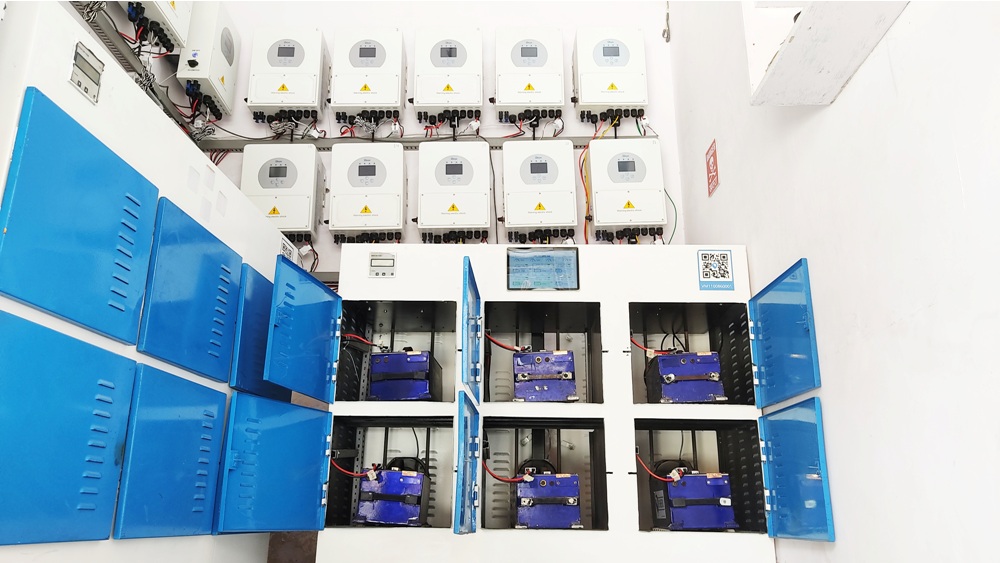Energy storage company Sheru recently partnered with power utility BSES Rajdhani Power Ltd to set up India’s first vehicle-to-grid (V2G) EV battery swapping station in New Delhi. In this interaction, we have Ankit Mittal, Co-founder & CEO, Sheru, expounding on V2G technology whilst explaining the criticality of this technology in the EV ecosystem. Mittal is confident that for a country like India where EVs are seeing rapidly growing acceptance, EV batteries can provide much needed energy-storage support to the power grid. An interview by Venugopal Pillai.

Let us start by understanding, in simple terms, what the concept of V2G (vehicle to grid) technology is.
V2G (Vehicle to Grid) technology allows the battery in an electric vehicle (EV) to be used as an energy storage device. It allows the EV to both receive energy as well as send it back to the grid – hence Vehicle to Grid. This then opens up the possibility of using the battery for a range of grid scale applications.
We further understand that Sheru is integrating V2G technology with battery swapping. Please tell us more.
Battery swapping is a part of the EV ecosystem where EVs simply swap their empty battery for fully charged ones at battery swapping stations. We have patented an energy vending machine which charges these batteries, while also sending energy back to the grid when needed. This bi-directionality allows it to act similar to V2G, only that in this case the swapping station interacts with the grid rather than individual vehicles.
As we appreciate, Sheru’s ultimate goal is to create a virtual energy storage platform by using EV batteries. Please elaborate.
We see the immense scope for using batteries to support the power grid. India, and the world, is seeing a concurrent rise in the addition of renewable energy as well as the uptake of EVs. The large addition of renewable energy needs energy storage solutions to support it. At the same time, batteries, whether in EVs or at swapping stations, are not used throughout the day and have substantial idle times. Our goal is to aggregate these batteries from any EV and create a virtual energy storage platform that can be used for various grid applications.
Tell us more about your partnership with BSES Rajdhani, highlighting the benefits that will accrue to both the utility and EV owners.
For the utility, there is the need for energy storage to support the grid during times of high demand. Energy storage allows utilities to avoid having to undertake expensive capital expenditures and upgrade the grid to meet this demand. It also allows us to use the full potential of a battery at a swapping station as we also use it for energy storage. For EV owners, or battery owners, there is an additional revenue stream as their batteries are being used for the energy storage network, which helps them recoup the investment in an EV sooner.
How many bi-directional swapping stations will be set up to start with? Is there a plan to increase them in the time to come?
We plan to scale it up to 10,000 in the next 24-30 months.
Can you give us an idea of the size of the swapping station? What would be average energy available (in terms of kWh or MWh) in the station?
The energy available would vary between 30-100 kWh.
At the practical level, how does a battery swapping station work, given that EV battery types/models could vary depending on the type of the electric vehicle? Will you store different types of batteries to be able to cater to a wide range of EV owners?
We work with e-rickshaws and use only one type of battery. And the same battery can also be used for 2-wheelers as well. So the battery swapping station has a number of batteries of the same kind, with EVs from 2-wheeler and 3-wheeler segments being able to use them.
If, for some reason, an EV owner cannot swap his battery, then will the swapping station have a supporting EV battery charger?
The swapping station has more batteries than the number of vehicles it caters to, precisely to avoid this situation. An EV will always have a fully charged battery available for it at the swapping station.
Is there any movement in the direction of standardization of EV batteries? Are EV manufacturers collaborating towards standardization?
Yes, there is a transition towards standardization of EV batteries. And yes, manufacturers are collaborating towards the same.
Returning to your partnership with BSES Rajdhani, is this Sheru’s first collaboration with a power distribution utility?
Yes, it is.
Are there plans to forge similar partnerships with other utilities, say BSES Yamuna – a group entity of BSES Rajdhani?
We are working on similar partnerships with other utilities, and will be announcing them in the near future.

When do you anticipate the first bi-directional EV swapping station under the partnership with BSES Rajdhani to come up?
It’s already live!
As India’s EV population grows over the years, we appreciate that EV charging stations and EV battery swapping stations will together be the key supporting elements. How do you see the growth and co-existence of these two segments, in India?
Charging stations and swapping stations cater to different users in the EV ecosystem. For those that want the least downtime, do not want to invest upfront in the battery, and to own an EV without having to worry about upkeep of the battery, swapping makes perfect sense. And we see this primarily in the commercial segment where downtime, capex, and upkeep are points to keep in mind while investing in the asset.
On the other hand, charging makes sense for private vehicles which work on longer charging times (or the occasional fast charger), and also sees consumer preference to own the asset.
Ultimately, the EV ecosystem will require a variety of solutions for different needs and we feel that there is immense opportunity for both charging as well as swapping to grow in India.
Inside photograph shows a view of the bi-directional EV battery swapping station that Sheru has developed in collaboration with BSES Rajdhani Power Ltd, in New Delhi.


